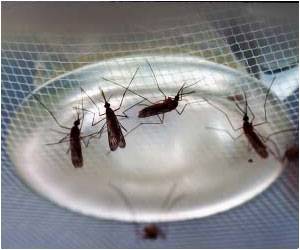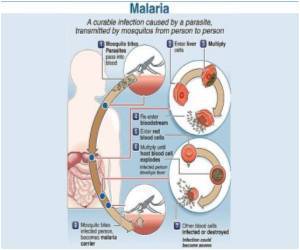Researchers from Rigshospitalet – Copenhagen University Hospital – and the University of Copenhagen have discovered why malaria parasites are able to hide from the immune defences

"The parasites are able to assume a camouflage that prevents their recognition by the immune system antibodies which would otherwise combat them. So although the immune system has all the weapons it needs to fight the infection of the placenta, these weapons are ineffectual simply because the enemy is hard to spot. Ironically the camouflage also consists of antibodies, but of a type that does not help to fight infection."
The malaria parasite at war with the immune system
One human being in twelve is infected with malaria. That means 500 million people are carrying the tiny parasite, and it kills a million of them a year. The disease costs so many lives because the parasite constantly outmanoeuvres the human immune system. It starts by hiding in the red blood cells. The immune system does not bother with these as the spleen usually filters defective blood cells.
To avoid this filter, the parasite ejects a protein hook which attaches to the inner wall of the blood vessel, and even if the immune system antibodies destroy one such hook, the parasite has more than sixty in its arsenal. One of them has evolved specially to attach to the placenta. While the war is being waged the parasite propagates and infects more and more red blood cells, which are normally used for transporting nutrients and oxygen around the body.
Fighting from house to house
Advertisement
"One example is the ability of the parasites to hide in the placenta. The first time an African woman conceives her placenta provides a new opportunity for the parasite to hide: a new house, so to speak, and in a way that prevents discovery by the immune system. It takes time for the immune defences to react to the new threat, and meanwhile the camouflaged parasite harms the woman and her unborn child."
Advertisement
"Perhaps it is not only the parasites in the placenta that are capable of hiding like this," Lars Hviid says.
"It takes the body a surprisingly long time to develop protection from Malaria, and perhaps the trick we have just discovered is part of the explanation. It is important for us to find out if this is the case in order to help us to understand malaria in general, but also to help us in our efforts to develop a vaccination. We have plenty of work to be going on with," Lars Hviid concludes.
Source-Eurekalert















